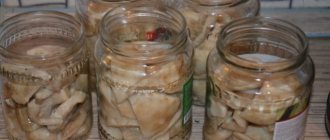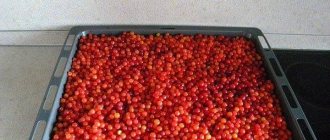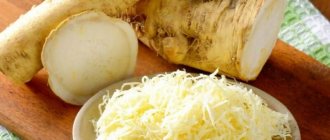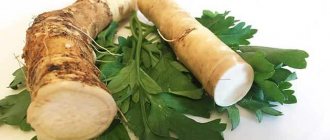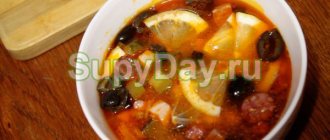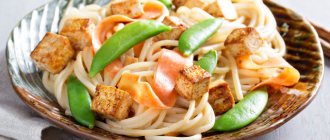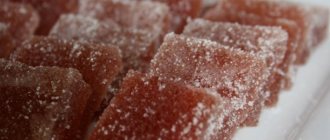If you have a freezer, then use it to store crops collected from the garden. For example, zucchini can last up to one year frozen, or even longer if you prepare it correctly. There are several ways to freeze fresh zucchini in the freezer; they are not complicated, and recommendations from experienced housewives with photos and videos will help you make your choice.
Can zucchini be frozen?
Many housewives and summer residents are very concerned about the question: Is it possible to freeze zucchini for the winter in the freezer? We hasten to please you - of course it is possible, and even necessary. And the volume of the workpiece is limited by the capacity of the freezer compartment of the refrigerator.
If you live in a region where frosts come early and last all winter without the onset of thaws with above-zero temperatures, processed zucchini can be stored in an unheated extension (on the balcony) - if you have a supply of vegetables that have been lying around since the fall.
Basic Rules
Vegetables with these characteristics are ideal for freezing zucchini for the winter.:
- unripe fruits (preferably);
- without signs of rot, at most with small, barely beginning signs of spoilage on the peel.
Before chopping the zucchini:
- wash, free from the stalk, the place where the flower is attached;
- dry thoroughly;
- cleared of seeds and adjacent pulp if the fruits are overripe;
- In large fruits, cut off the top layer of the peel if it is dense and hard.
Which zucchini is suitable for freezing?
Not just any zucchini is suitable for freezing; the type of zucchini will not affect the quality of freezing. Attention should be paid to the freshness of the vegetable. Young fruits retain beneficial microelements and vitamins best. The skin should be soft, without damage or rot.
If you still use a mature vegetable for freezing, you must first cut off the skin and remove the middle part with the seeds.
To begin, the zucchini is washed with cold water and dried. Then the vegetables are chopped. The shape is chosen based on what is planned to be prepared from them. Chopping into cubes is suitable for soups and stews. Vegetable casseroles will be complemented by frozen zucchini, cut into slices. The size of the cubes or circles should not be too large or small. The product, crushed on a coarse grater, is added to pancakes and cream soups.
Preparation process
Algorithm for preparing zucchini for freezing:
- Thoroughly rinse the batch of vegetables intended for freezing.
- Wipe each fruit dry.
- Peel large fruits from peels, seeds and adjacent chaff.
- Grind.
- Blanch (optional).
- Cook in advance: fry until done in slices, saute, cook caviar - if desired.
- Squeeze out the mass if it was crushed using a grater or blanched.
- Dry slightly by spreading a mass of cubes, sticks, and circles in one thin layer on a table, baking sheet, or large flat plate.
- Collect in a bag (vacuum, regular), place on a cutting board, the size of which is smaller than the width and depth of the freezer.
- Place the packaged product in the chamber.
In batter with minced meat
An appetizer of fried zucchini in batter is suitable for an everyday or holiday table. The chicken meat included in the dish can be replaced with any other meat if desired.
Composition of ingredients
The following components are used in the cooking process:
| Product | Quantity |
| Zucchini | 2 pcs. |
| Minced meat | 300 g |
| Milk | 2 tbsp. l. |
| Egg | 3 pcs. |
| Ground pepper | ½ tsp. |
| Flour | 3 tbsp. l. |
| Salt | 1 tsp. |
Step-by-step cooking process
Zucchini in batter is made from frozen or fresh vegetables, pre-cut into circles, 3-5 mm thick:
- Place the minced chicken in a bowl, add salt and pepper, mix thoroughly with a spoon.
- To prepare the batter, beat the eggs with milk with a whisk or using a mixer.
- Add pepper and salt and beat together again. Gradually add the sifted flour and continue beating. The batter mixture should be homogeneous and without lumps.
- Defrost the zucchini naturally in advance. Take a slice of vegetable and spoon a small amount of minced meat onto it. Press the minced meat on top with a second slice of zucchini, but do not press too hard so that the minced meat does not spread.
- Vegetable oil is heated in a frying pan. When smoke comes from the surface of the frying pan, reduce the heat to minimum and begin to fry the resulting columns on both sides. First, the columns are dipped in batter on all sides. For convenience, use a skewer or fork.
- The readiness of the snack is determined by the readiness of the minced meat - it should not be red. The appetizer is placed on portions or a shared plate and decorated with fresh herbs.
Blanching issue
After you have more or less figured out the question of how to freeze zucchini for the winter, another equally important point comes up - blanching, is it necessary? It is done at will. Some housewives do not like the taste of zucchini after freezing if it was not blanched before sending the vegetable mass to the refrigerator.
A simple experience will help you decide on your own taste preferences.:
- First, freeze blanched and unblanched portions of zucchini.
- The next day, prepare both pieces in the usual way.
- The result you like best will help you decide on the method for preparing zucchini for the winter.
How to freeze zucchini for baby food. Frozen zucchini will save winter complementary foods
But what should those parents do who need to start complementary feeding in the winter? There are two options: buy ready-made purees or freeze vegetables for the winter. Store-bought baby food is quite expensive. The already opened product should be eaten within one, maximum two days. The rest will just have to be thrown away so as not to harm the baby.
Therefore, freezing zucchini for the winter will be the most acceptable option for organizing children's first complementary foods. But you need to prepare the vegetables correctly. We will need zucchini in portions. Of course, you can freeze them in large bags or trays. But during the freezing process, you will need to open the freezer several times and manually knock off the ice crusts, stirring the vegetables.
It will be much more convenient and faster to freeze the first complementary foods in ordinary disposable cups. To do this, we take small glasses (stacks) for the first minimal portions and larger ones for subsequent feedings. Pour the chopped vegetables inside and seal tightly with cling film or foil.
Such containers are very convenient to install in the freezer. It doesn't take up much space and is very easy to get. Frozen vegetables cook even faster than fresh ones.
Vitamin C is not destroyed by freezing. But it’s not worth the risk and it’s better to use quick freezing. To do this, set the maximum value of sub-zero temperature indicators on the freezer panel and wait for an hour. Once the desired temperature has been established inside, quickly place the hermetically sealed container in the prepared area. We're waiting for an hour. Checking the quality of freezing. We return the original indicators of food storage.
For vegetables and fruits, you need to have a separate shelf in the freezer or freezer. Meat and fish should not be stored together with baby food. Be careful with the pepper too. Frozen pepper is an excellent vitamin supplement for borscht and stew, but it tends to transfer its smell to other products even in this form. Therefore, if you store peppers in the vegetable compartment, pack them very carefully.
https://youtu.be/h2ZUgdW7cPk
Temperature and shelf life
Vegetables freeze perfectly both in a regular refrigerator freezer (- 12°C; - 18°C) and in a freezer with deep-freezing boxes (at a temperature: -24°C; -26°C). So how long do frozen zucchini last? Up to 10 months (once melted zucchini mass is not recommended to be re-frozen).
Read about the general rules for storing zucchini in an apartment here, and this article explains how zucchini is stored in the cellar.
Preparing zucchini for baby feeding
To freeze zucchini puree, boil the zucchini for 10 minutes, cool and drain. Then crush with a blender or rub through a sieve. Pour the well-chilled mass into molds and place in the freezer.
Such zucchini are used for feeding children of the first year of life, as well as for preparing puree soups and vegetable sauces. To do this, defrost the puree completely, beat it again and heat it up.
Tips for the garden, vegetable garden and flower garden
New moon in September 2021 when from what date to what time
Waning moon in September 2021 when from what date to what date
Full moon in September 2021 when from what date to what time
Freezing methods
Zucchini is frozen:
- crushed;
- without preliminary blanching;
- without pre-drying (cut and immediately put in the freezer);
- pre-boil in boiling water for 2 minutes;
- mixed with chopped herbs and spices;
- combining with chopped vegetables, roasted/not roasted (peppers, carrots, tomatoes, eggplants).
In the freezer
Let's look at what we need to freeze zucchini in the freezer :
- Wash the vegetables.
- Remove moisture from the fruit by wiping with a towel or leaving to dry naturally.
- Prepare packaging containers: plastic containers, plastic bags with or without a vacuum clamp.
- Get tools: cutting board, knife.
- Trim the tails, remove abrasions, spots of damage, and growths.
- Cut large fruits into halves, free them from peels, seeds, and adjacent pulp.
- Chop the zucchini.
- Dry slightly if you don't want to blanch.
- Briefly immerse the blanched ones in ice water and then place them in a sieve, waiting for all the liquid to drain.
- Place the processed mass in containers, bags, on a board and put it in the freezer for an hour.
- After half an hour, take out the containers, shake/mix the contents (so that the mass retains its flowability).
- The mugs laid out on a baking sheet or board can be quickly collected and placed in a container, placing each piece on its edge, or poured into a bag.
- Remove processed zucchini for storage.
In a refrigerator
Frozen zucchini can only be stored in the freezer compartment of the refrigerator. The algorithm for processing zucchini is the same as for mass intended for storage in the freezer.
How to freeze zucchini for caviar.
Freezing squash caviar for the winter helps out in winter when there are no fresh vegetables available. Squash caviar preserved in jars is very capricious - the preparation can “shoot” at any time, especially if stored in a pantry or apartment. Therefore, I advise apartment owners to freeze vegetables to create squash caviar in the freezer, since during their ripening season they are inexpensive, and mixing the products will only take you 10-15 minutes!
To forestall numerous questions about the fact that different vegetable cuts require different cooking times, I will say that when frozen, the water in the slices crystallizes and disrupts the structure of the vegetable, so when defrosted, the slices do not hold their shape. So when frying and stewing, the entire mass will be cooked at the same time.
Neither onion, garlic, nor bell pepper are added to the preparation, since such vegetables give off their flavor to neighboring preparations, such as strawberries or raspberries, and when defrosted they turn into a shapeless mass. In addition, both onions and garlic are easy to purchase in the store in winter.
To create caviar from the preparation, you just need to fry the onion and put the vegetable mixture in a cauldron with the onion, even if frozen. Pour in a little water, add spices, squeeze out the garlic and simmer everything for about 20 minutes, then puree with a blender and get aromatic squash caviar!
Zucchini - 2 pcs.
Carrots - 1 pc.
Tomato - 2 pcs.
Dill - 1 bunch (8-10 g)
So, prepare the necessary ingredients.
Rinse young zucchini with loose seeds inside in water and cut off the tails on both sides of the vegetables. Cut into cubes or half rings, into cubes - as desired. Place the slices into a deep bowl.
Peel the carrots, rinse and treat them in the same way as with the zucchini.
Wash the tomatoes, cut out the green cores, cut into slices and add to the rest of the vegetables.
Wash and chop fresh herbs and add to the container. There is no need to salt or pepper the preparation!
Mix everything carefully.
Place in containers or plastic bags, seal or tie tightly, and place in the freezer until winter.
Storing with eggplants
Now let's move on to the question of whether and how to freeze zucchini and eggplant for the winter? To answer the first question, we assure you that yes, it is possible.
First you need to remove excess bitterness from eggplants. How to do it? If not all housewives blanch zucchini before freezing, then almost everyone subjects the eggplants to a little heat treatment to make their taste more pleasant.
You can also remove bitterness from eggplants using a dry method: by keeping mugs or slices of eggplant sprinkled with salt for some time. After twenty minutes of salt “therapy,” the blue ones are washed, dried with a towel and subjected to further processing using the method of preparing zucchini for freezing.
Grated zucchini
Zucchini chopped with a grater is needed for making pancakes, pureed soups, and baby food dishes. Algorithm for freezing grated zucchini mass :
- The fruits are washed.
- Remove the stalk and the place where the flower is attached.
- Ripe seeds are removed from large vegetables and the peel is removed.
- Grate the pieces (the size of the holes is chosen based on the further use of the workpiece).
- The mass is squeezed out, added to taste, flavored with spices, and placed in a plastic container or plastic bag.
- The packaged mass is placed in the freezer.
In a slow cooker
Housewives can cook frozen zucchini in a slow cooker using different modes. This recipe makes stewed zucchini cooked with beans.
Frozen zucchini, recipe for stewing with beans in a slow cooker.
The finished dish is served as a complex side dish or as an independent dish.
Composition of ingredients
The following products are used in the cooking process:
| Product | Quantity |
| Young zucchini | 2 pcs. |
| Canned beans | 1 jar |
| Flour | 2 tbsp. l. |
| Tomatoes | 3 pcs. |
| Garlic | 3 cloves |
| Carrot | 1 PC. |
| Onion | 1 head |
| Vegetable oil | 2 tbsp. l. |
| Chopped greens | 2 tbsp. l. |
Step-by-step cooking process
Zucchini stewed in a slow cooker is prepared according to the following recipe:
- All vegetables are thoroughly washed. Zucchini and tomatoes are cut into small cubes, about 1-2 cm.
- Peel the carrots and cut into narrow slices.
- Peel the garlic and onion and chop it with a knife.
- Place the beans in a colander, rinse and allow excess liquid to drain.
- Pour oil into the bottom of the multicooker, set the “Baking” mode and fry the chopped onion in oil.
- After 7-9 minutes. Add pieces of zucchini to the onion, which have previously been rolled in flour on all sides. They continue to cook.
- After 5 min. add vegetables and beans. Sprinkle with salt, pepper and chopped herbs. Mix all ingredients with a spatula.
- Set the “Quenching” mode and the timer to 40 minutes. Cook until the beep sounds.
Recipes
There are many variations on how to freeze zucchini for the winter for various dishes; below we will look at the most popular and in demand of them.
For a quick stew
Wash two zucchini, 200 grams each, remove the peel, stalk, and receptacle. Then:
- chop the zucchini;
- Peel two onions, cut them and fry them (oil to taste);
- add a couple of grated carrots to the golden onion, simmer until almost done;
- Separately fry four red bell peppers in a small amount of oil;
- Cool the heated vegetables and mix with the zucchini mass;
- place the semi-finished product in a bag, then give it a flat appearance;
- put the preparation for quick stew in the refrigerator.
With greens
To avoid storing zucchini and greens in separate bags, you can mix them before putting them in the freezer. First, vegetables and parsley/dill are washed, then removed from excess water. Clean preparations are chopped (zucchini into cubes, greens as usual), mixed, packaged, and sent to the freezer for cooling.
Fried zucchini, flavored with fresh dill and garlic, are especially revered at the beginning of summer, when everyone wants to diversify their winter-tired diet with fresh vegetables. To prepare a complete dish, you will need to add tomato paste or tomatoes, garlic (at the end), and other vegetables as desired.
Using the capabilities of the freezer, you can prepare typical summer zucchini dishes not only during the season, but also before Christmas, on any winter or spring day. The main thing is to prepare more frozen vegetables in a timely manner.
Of course, you can store zucchini not only frozen. We invite you to familiarize yourself with recipes for dried vegetables, as well as those dried for the winter.
https://youtu.be/iypDmXYeKeo
What vegetables can be frozen for the winter. Vegetables, herbs and mushrooms
- Dill can be frozen in cubes, which is very convenient to throw into soup/borscht later. Place chopped dill in ice trays, add water and freeze.
- In addition to dill, you can also freeze chopped green onions. And in winter, add it to boiled potatoes, for example!
You can freeze greens! In the winter, it's so great to grab a handful and throw it into soup. It is not advisable to wash greens before freezing, but if necessary, be sure to dry them afterwards.
Greens in zip bags. Photo by selena224
- Cucumbers are usually frozen only grated, for okroshka. There are people who like to freeze cucumbers into small cubes for salads.
IRRA shares this interesting way of freezing whole cucumbers for cold winter soups:
“I just wash the cucumbers, dry them, pack 1-2 pieces, depending on the size, into bags and put them in the freezer. You can remove the skin immediately, but during the harvesting season there is simply no time to do this. In winter, I take it out of the freezer, pour boiling water over it, and immediately remove the skin with a vegetable peeler. You can let it sit on the table for a couple of minutes and immediately grate it. They are very cold, but you will have to be patient. If they defrost, they will be rubbery. As soon as I grate it, add salt and leave it to defrost. While they are defrosting, you can prepare the filling (potatoes, eggs, meat, etc.). I like these cucumbers better in winter than store-bought ones: firstly, they are homegrown and guaranteed to be chemical-free, and secondly, they smell fresh and retain the taste of fresh cucumbers.”
Vegetables whole and in large pieces. Photo by IRRA
Here is another option for freezing cucumbers (when you have time) - wash and peel the cucumbers, grate them and place them in silicone molds. Cover with cling film and freeze. Once frozen, remove from the molds and place in bags.
Grated cucumbers in silicone molds. Photo by IRRA
- You can freeze homemade vegetable mixtures, such as chopped peppers, tomatoes and herbs.
- Currant leaves, tarragon, and mint can be frozen for tea. It is recommended to brew it not with boiling water, but at about 80 degrees.
- Tomatoes can be frozen either whole or sliced. It is better to freeze medium-sized tomatoes from your garden whole; when cooking, you need to rinse them with boiling water, then the skin will easily be removed and the vegetable can be cut. Large ones can be frozen in pieces after first peeling them. You can also puree the tomatoes and freeze them in small containers. Use in soups or sauces.
Frozen tomatoes rings. Photo *Water Lily*
- It is convenient to freeze zucchini, pumpkins, and zucchini cut into pieces, such as you will later use in cooking. You can freeze zucchini in plates and use it for zucchini lasagna or casseroles in winter. Secrets of freezing zucchini from IRRA
- Eggplants can be frozen raw, but not everyone likes frozen raw or even blanched eggplants, so many people prefer to freeze them fried or baked.
Wash the eggplant, cut into wheels 1-1.5 cm thick. Add salt and leave on the board until they tear up. Then fry on both sides, cool and place tightly in a suitable plastic container. To freeze. In winter, take it out, defrost, sprinkle with garlic and eat.
- Cauliflower should be frozen by disassembling it into inflorescences. Some people advise blanching cauliflower before freezing to get rid of the unpleasant aftertaste after thawing, but you can also freeze fresh. The secret to blanching vegetables before freezing: add citric acid to the water (about 1 teaspoon per 3-4 liter pan). This preserves the color - the cauliflower will be snow-white after blanching!
- Green peas, beans, and beans freeze well. It is also recommended to blanch green beans.
- Bell peppers can be frozen cut into small pieces, long slices, or whole “cups” for stuffed peppers in winter. If you first dip these “cups” in hot water for a couple of minutes, they can be flattened to save space without breaking. You can also freeze the peppers in halves to save space, then make the stuffed peppers into “boats” in the oven.
Pepper halves, small tomatoes and tomato pieces in a bag. Photo by Julia241181 - It is better to freeze carrots chopped, grated or in a food processor. Carrots are washed in large quantities, peeled, thrown into a colander (so that the water drains and there is no ice in the frozen one), put through a processor, put in a bag and frozen. Then, if necessary, it is taken out, the required amount is cut off and prepared. Beets are frozen in the same way.

